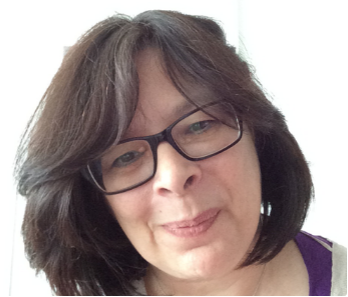 Teresinha Evangelista is a clinical neurologist and a researcher at the Morphological unit of the Institute of Myology. She has just been appointed again as coordinator of the ERN-Euro-NMD Neuromuscular Disease Network. It brings together 61 healthcare providers (HCP) located in 14 European countries, including 8 centers in France.
Teresinha Evangelista is a clinical neurologist and a researcher at the Morphological unit of the Institute of Myology. She has just been appointed again as coordinator of the ERN-Euro-NMD Neuromuscular Disease Network. It brings together 61 healthcare providers (HCP) located in 14 European countries, including 8 centers in France.
What is the need for the creation of ERNs in Europe?
ERN are European health networks for patients with rare diseases or who need very specific interventions that do not exist across Europe. Rare diseases are characterized by a small number of patients but also, in some countries, few or no experts and a lack of means to make diagnoses. The idea was to create networks to link expertise so that patients all over Europe could have the same diagnostic and care opportunities. There are currently 24 ERNs, including ours, which concerns neuromuscular diseases, called ERN-Euro-NMD. If there had been a multitude of informal initiatives before, the ERNs have linked, organized and disseminated them to 14 of the European countries, for the moment.
How is the ERN-Euro-NMD organized?
The network is organized in different working groups. Groups are dedicated to medical aspects and subdivided according to pathologies: mitochondrial diseases, motor neuron / spinal muscular atrophy diseases, muscle diseases, muscle junction defects and peripheral nerve diseases. There are also transversal groups dedicated to diagnostic tools: neuromuscular imaging (headed by Pierre Carlier), neurophysiology, neuropathology and genetics. Other transversal groups have been put in place concerning ethics, or education (headed by J. Andoni Urtizberea). These groups dedicated to the clinical part of the ERN concern, tele-consultation of course, but also the writing of recommendations or the dissemination of information via a website. Also note the presence of patient representatives at various levels of governance of the ERN (François Lamy, AFM-Telethon is chairman of the Patient advisory board).
In pratical terms, how does the network work?
The virtual network uses in particular a collaborative computer platform developed specifically for ERNs, the CPMS (Clinical Patient Management System). This telemedicine tool allows multi-disciplinary online consultation meetings to examine clinical cases. It’s about moving data rather than patients, while offering as much as possible the best support available in Europe today.
What is your role in this structure?
As network coordinator, I act on many levels: I make sure that the network members participate and give ideas to advance the ERN, for example make concrete proposals on aspects of education (webinars , etc.). I also bring together the ERN and the European Commission (EC) and try to match the vision of the EC with the realities of the ERN! And conversely, bring the needs of the ERN back to the EC. I also make the link with representatives of ministries of health of each country participating in the network, to ensure that national health policies are compatible with the functioning of the ERN.
It is a rather dense activity … and rewarding for individuals and institutions. Indeed, out of the 24 ERNs, 8 are now coordinated in France, thus offering prestige and influence to research and to the French care system, the ERN-Euro-NMD that I coordinate brings a greater visibility to the Institute of Myology.
Further details on ERN-Euro-NMD website
